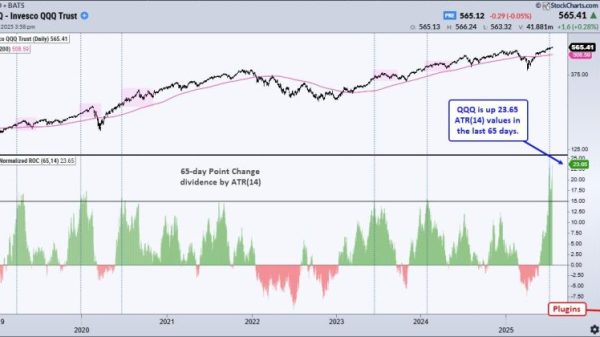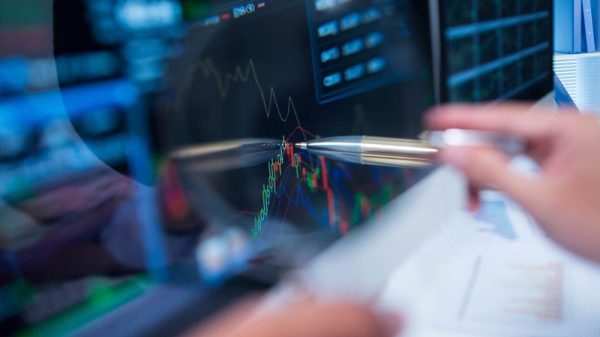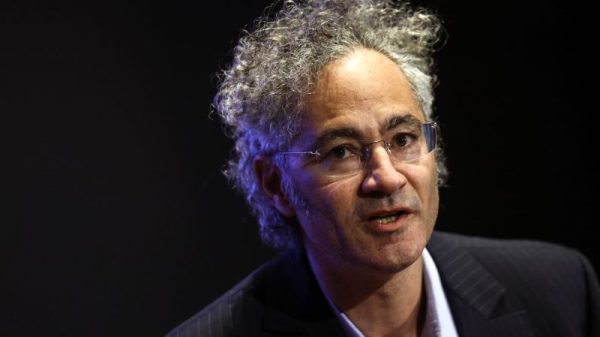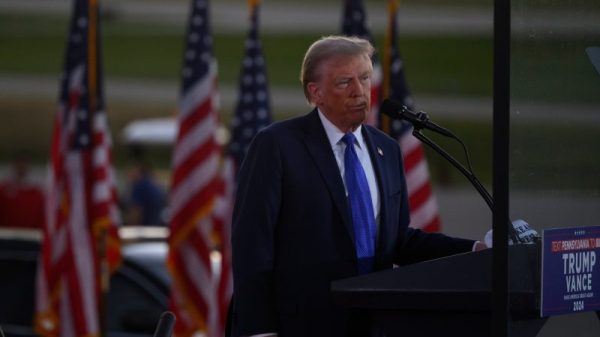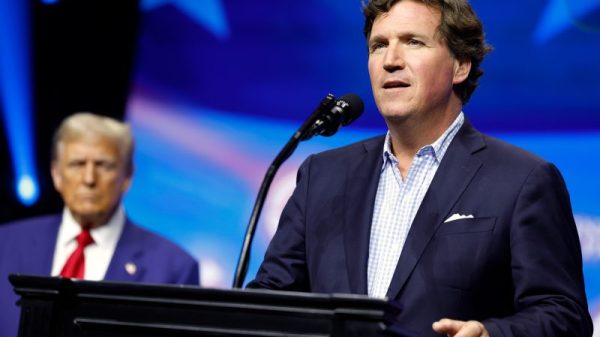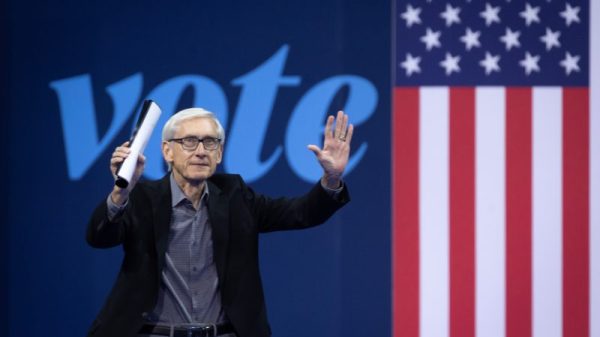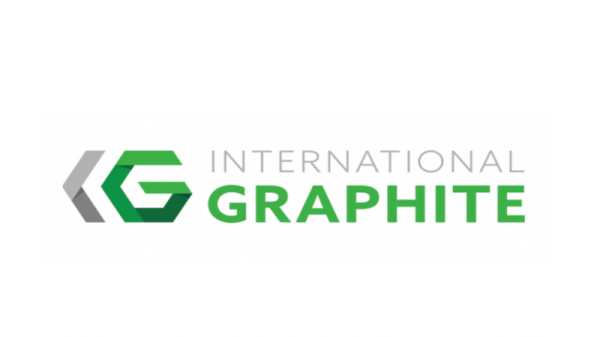During a presentation at Fastmarkets’ annual Lithium Supply and Battery Raw Materials conference, Andy Leyland, founder of Supply Chain Insights, emphasized the need to develop more regional supply chains to lessen dependence on China, but acknowledged that this transition is being hindered by significant obstacles, including high costs, a lack of transparency and insufficient government support.
“To build out a linear supply chain, you’re not just building mines, you’re not just building refineries to produce hydroxide. You also need to build the cathode capacity, you also need to build the battery capacity,” he said. “And that means encouraging a whole group of companies to make investments in different stages of the supply chain.”
Underscoring the importance of building and fortifying regional supply chains, Leyland noted that demand for lithium-ion battery cells is projected to increase at a compound annual growth rate (CAGR) of 20.2 percent in the next decade.
This demand will be led by the electric vehicle (EV) sector, which currently accounts for nearly 1 terawatt hour (TWh) of production, with that amount expected to grow to almost 5 TWh by 2035. The portable electronics and energy storage sectors will also contribute to an upward demand trend for lithium-ion batteries over the same period.
By 2035, Leyland expects all three segments to account for 7.5 TWh of production capacity.
For now, 90 to 95 percent of the cells built in the US are destined for the EV sector — according to Leyland, the market is in the second phase of a four phase EV adoption model, which has made investment precarious.
The four phases of EV adoption that Leyland described are:
Phase 1: Global EV sales limited by supply, including production and supply chain issues.Phase 2: Global EV sales limited by demand. Increase in plug-in hybrid EVs / hybrids.Phase 3: Potential for EVs to surpass internal combustion engine vehicles on all major metrics, but market specific.Phase 4: Global EV sales increasingly forced by political mandates, potentially held up by Global South.
While in Phase 1 the EV market was constrained by limited supply, now the market is more limited by consumer demand, influenced by factors like charging infrastructure, range anxiety and costs.
Although there is growing interest in EVs, efforts are still needed to persuade consumers to make the switch. Leyland explained to the audience that this is partly because clear evidence about the benefits of EVs is lacking, especially regarding their range, charging speed, sticker price and lifetime cost of ownership.
“In a couple of years’ time — probably about three years from now — in European and North American markets, we actually get to a stage where it’s very difficult to justify buying an internal combustion vehicle,” he said.
This shift is already happening in China and is expected to spread.
Eventually, political mandates will further restrict internal combustion vehicle sales, with targets set for around 2030 to 2040, though some of these deadlines might be delayed, said Leyland.
Regional hubs, nearshoring needed to diversify beyond China
Although EV adoption is currently in a plateau period, experts like Leyland continue to stress that now is the time to develop robust and resilient supply chains to facilitate eventual mandates and decarbonization targets.
The development of regional hubs, along with nearshoring, the process of relocating business operations to nearby countries, will help nations reduce dependence on single sources for EV battery raw materials.
However, Leyland stressed that it’s not easy to invest in various stages of the supply chain simultaneously.
‘It’s very difficult to do, because in the vast majority of circumstances, you don’t have one company operating across the supply chain,’ he explained during his presentation at the Fastmarkets event.
He mentioned GM (NYSE:GM) and Tesla (NASDAQ:TSLA) as companies that have joint venture and supply deals both up and down stream, but juxtaposed them with Chinese companies like BYD (OTC Pink:BYDDF,SZSE:002594) and Ganfeng (OTC Pink:GNENF,SZSE:002460,HKEX:1772), which are integrated across the entire EV supply chain.
Although the location of minerals and metals was long ago predetermined by geology, 70 to 80 percent of the processing and manufacturing capacity for these critical materials is dominated by China.
“That is politically unacceptable in Europe, it’s politically unacceptable in the US and other countries, because of the political mandates,” said Leyland, adding that western companies are having to rebuild supply chains.
By 2030, Supply Chain Insights expects to see a global hub model that can facilitate domestic EV markets.
According to Leyland and his team, “battery ecosystems” will bolster supply chain security, promote localized job growth and lower environmental impact in Europe and North America, “in spite of China’s comparative advantage.”
Lack of investment fueling potential lithium shortage
Oversupply is weighing on lithium prices and market development, but Leyland stressed the need for market participants to take a long-term vision when it comes to supply of the key battery metal.
As mentioned, the lithium-ion battery cell market is expected to expand at a CAGR of 20.2 percent over the next decade, while the lithium market will register a 14 percent CAGR.
Currently, however, Leyland sees a ‘huge number of challenges’ for the lithium industry today.
He noted that in order to keep up with projected EV growth trends, supply wil need to double every five years.
“At least 80 as yet unfinanced lithium extraction operations are required by 2035,” a slide from his presentation states. “Much of the pipeline of projects are struggling with financing today. A similar number of lithium refineries and expansions are also needed, also often struggling with both financing and raw material supply.”
Adding to that, Leyland said it’s challenging to build large stockpiles of lithium, which exposes the market to heightened volatility. “And it looks like with the lack of investment we’re seeing now, by the time we get to 2027 to 2028, potentially we’re going to have another big shortage of material,” he commented.
To combat a potential shortage, lithium prices need to reach US$23,000 per metric ton, which Leyland considers the incentive price. Currently, prices for lithium carbonate are at only US$11,115.
‘(Until then), there are a lot of things that governments need to do to protect the industry. Because effectively, China has an existing industry and advantage,” he explained to the Fastmarkets audience.
Leyland went on to note that western OEMs are growing increasingly concerned about their competitive position, particularly when it comes to lower-cost, lower-margin lithium-iron-phosphate (LFP) cells. However, the introduction of higher tariffs on Chinese imports by the US, and possibly Europe, is providing them some relief.
While Europe remains open to Chinese investment, the US is less likely to do so.
He also highlighted the importance of government support in building battery cell production capacity.
“Because you have to pay billions of dollars for the factory, it is very difficult for companies to get into the supply chain without some level of government support,” he said, noting that the US has provided some large subsidies.
In addition to giving subsidies, governments can streamline legal challenges for extractive industries, expedite permitting, support debt financing, help to consolidate the qualification processes, implement policy coordination across countries and regions and work to increase social license for extractive industries.
“We really need to work on the social license that people have for extractive industries,” he emphasized in closing. “People associate the extractive industries with fossil fuels, and they just don’t have in their mind that we should be investing in mining to actually aid the energy transition.”
Securities Disclosure: I, Georgia Williams, hold no direct investment interest in any company mentioned in this article.






